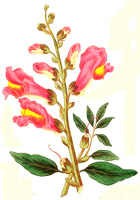
Thanks to my good blogger friend Jackie of Visions of Kefalonia who also happens to be an extraordinary guide and a true credit to her profession, during my Kefalonian spell, I was voluntarily sweet-talked into visiting the homeland of the epic hero Odysseus (Ulysses), the neighboring island of Ithaka (Ithaca, Ithaki)... Though only divided by a channel, at the first glance, not much to catch your eye other than the mysterious green mountain tops that embrace the island as well as many of its long forgotten secrets. I embarked the ferry to Ithaca, hoping to retrace some of Odysseus footsteps with the little help of our wonderful guide.
Though only divided by a channel, at the first glance, not much to catch your eye other than the mysterious green mountain tops that embrace the island as well as many of its long forgotten secrets. I embarked the ferry to Ithaca, hoping to retrace some of Odysseus footsteps with the little help of our wonderful guide.


Little did I know, that after the first few minutes of the bus ride I was about to discover that Ithaka was much more than what it is credited for in the world, the home of Odysseus. To make it short and simple: in my humble opinion, this magnificent island is everything Kefalonia should have been, had it not been scarred by tourism and the ignorance of the local authorities. First of all, it has luckily been spared by many great fires that had raged through its sister island. Probably why the first thing that strikes your eyes is : green, and more green.

Along with Kefalonia, Ithaka has been loved by Lord Byron of 19th century while modern poets like Kavafis and Christianopoulos have gifted Greek literature with great poems symbolizing the island with journeys and passion.
 Furthermore, they have strongly conserved the architectural authenticity and unspoiled beauty. The little picturesque ports are dotted with yachts
Furthermore, they have strongly conserved the architectural authenticity and unspoiled beauty. The little picturesque ports are dotted with yachts yet even during high season, the island remains as peaceful as back in the times of Ulysses. Having no water sources of its own, you'd consider it to be quite a barren island, but quite the contrary, you can't help but be mesmerized by the vast diversity of flora and so many charming villages harmoniously in bloom. There's no long, sandy beaches stuffed with umbrellas and Mitch Buchanon wannabes, just a great number of tiny, beautiful, intact, sparkling coves adorned with lush greenery. Unfortunately, that's as far as I got out of a one-day bus tour around the island. Fortunately though, it has surpassed all of my expectations. A small island, but a great memory!
yet even during high season, the island remains as peaceful as back in the times of Ulysses. Having no water sources of its own, you'd consider it to be quite a barren island, but quite the contrary, you can't help but be mesmerized by the vast diversity of flora and so many charming villages harmoniously in bloom. There's no long, sandy beaches stuffed with umbrellas and Mitch Buchanon wannabes, just a great number of tiny, beautiful, intact, sparkling coves adorned with lush greenery. Unfortunately, that's as far as I got out of a one-day bus tour around the island. Fortunately though, it has surpassed all of my expectations. A small island, but a great memory!
The main port on the island of Ithaca is a secret place, invisible from the sea. Experienced mariners know which inlet to take to find its principal anchorage, a large bay with a simple name: Vathy, meaning "deep". It is an island particularly loved by sea captains, many of whom come to retire here. There are said to be 400 of them living on Ithaca today, many spending their days on the harbour front, drinking coffee and telling yarns. (Elizabeth Speller)
As you set out for Ithaka hope your road is a long one,full of adventure, full of discovery. Laistrygonians, Cyclops,angry Poseidon-don't be afraid of them: you'll never findthings like that on your way as long as you keep your thoughtsraised high, as long as a rare excitement stirs your spirit and your body...
Keep Ithaka always in your mind.
Arriving there is what you're destined for.
But don't hurry the journey at all.
Better if it lasts for years,
so you're old by the time you reach the island,
wealthy with all you've gained on the way,
not expecting Ithaka to make you rich.
Ithaka gave you the marvelous journey.
Without her you wouldn't have set out.
She has nothing left to give you now.
(C.P.Cavafy / Kavafis, ''Ithaka'')
(one of the most distinguished Greek poets ever)
Now, the quest for Ithaca, in the eyes of many, has not yet been solved. There's recent rumors that the mythical home of Odysseus actually stands on the very island of Kefalonia, and there's actually a couple of destinations that perfectly fit the descriptions set in Homer's Odyssey. Does it really matter? Politics and tourism alone will always choose just the next best and most convenient truth. And mind you, the Greeks being one of the most welcoming hosts in the world will make up the most amazing stories just to feed it to your desperate wandering souls. But what you see with your bare eyes is a mystery that will hopefully never evaporate. The mystery of nature at its best ...
 And to finish my short tour,
And to finish my short tour,what better than Lord Byron's famous quote:'' If I am a poet, the air of Greece has made me one. ''
























































 Top Gardening Sites
Top Gardening Sites

